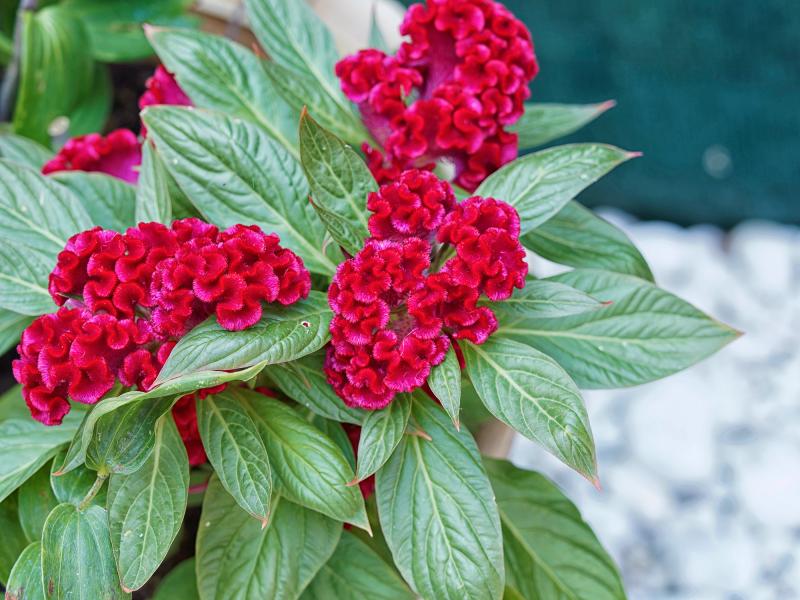The name of the flower Celosia comes from the Greek word kelos, meaning burned, to describe the flower heads that look like flames.
Celosia are also known as cockscomb, because some of them look like a rooster's comb. Certain celosia are known as wool flowers. Celosia Chinese Wool Flower (Celosia argentea) has startling flower heads that look like tufts of bright-red yarn. The puffy flowers of this amaranth family member can be used to decorate plates or arranged as fresh-cut blossoms. The colorful blooms can also be dried for everlasting displays.
Best of all, you can eat the young leaves the same way you eat spinach, fresh in salads or steamed as a side dish. The leaves have a light, very delicate gourmet taste. Celosia greens are unbelievably nutritious, with a single serving providing all of the daily recommended vitamin A and around 25 percent of calcium. Celosia was used in traditional or folk medicine to treat blood diseases, intestinal worms, and eye and mouth diseases. Celosia seeds were used to treat problems with the chest. Even the edible flowers were used to control diarrhea.
This is a rare plant in American gardens, even though it is actually very easy to grow. Chinese wool flowers will bloom from late summer until killed by frost in the fall.
Sow Chinese wool flower seeds indoors 6-8 weeks before the last frost. This plant doesn't like to have its roots disturbed by transplanting, so use peat pots. Place the entire pot into the soil at planting time to minimize shock.
Set them out in the garden at least two weeks after the last frost, when the ground has completely warmed up. You can also plant seeds directly in the garden where they will germinate in 6-14 days. The ideal soil pH is 6.0 to 7.0. As a tropical native, this plant enjoys warm temperatures, so cover them if it gets too cold at night. These are large flowers, so they grow better outdoors in the garden than in pots. Chinese wool flowers grow well in sandy, well-draining soil. If your garden soil is heavy and drains poorly, add sand or organic matter such as compost to improve drainage.
Chinese wool flowers grow best in full sun or light shade. Because Celosia are heavy feeders, it is good to fertilize them every two weeks while they are actively growing. Use fertilizer intended for flowering plants.
Deadhead any faded or spent flowers to encourage more blooms. Keep an eye out for diseases and insect pests. Chinese wool flowers are usually very healthy, but aphids and spider mites can occasionally be a problem. Treat them with neem oil.
Get set for spring and plant some Chinese wool flowers. Add the delicious leaves to stir-fries, stews, soups, and even lasagna and as a topping for pizza. Spring beckons.





















































